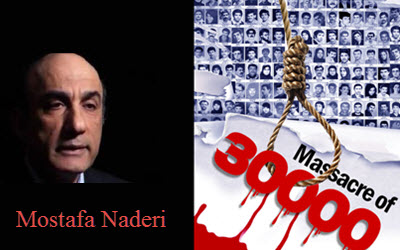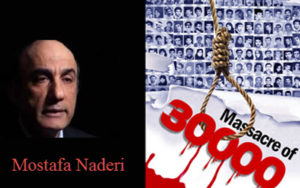
 A survivor of the 1988 Iranian massacre of political prisoners has spoken out in an op-ed for the National Post.
A survivor of the 1988 Iranian massacre of political prisoners has spoken out in an op-ed for the National Post.
Mostafa Naderi spoke of his relief that Canadian-Iranian academic Homa Hoodfar had been released from Evin prison and if anyone should know what she’s been through, it’s him.
Naderi, who was imprisoned in Iran for 11 years, was arrested in 1981 at just 17 years old for political dissent and promoting human rights. He had been caught selling the publication of the Regime’s main opposition, the People’s Mojahedin Organization of Iran (PMOI/MEK).
He wrote: “My imprisonment took place at a crucial time, and if not for a handful of chance occurrences, I would have surely been one of the 30,000 victims of Iran’s 1988 massacre of political prisoners.”
He spent 5 ½ years in solitary confinement and six years in a prison in northern Tehran, all the time enduring horrific torture including being flogged on the soles of his feet until he lost consciousness.
This may have saved his life, however, as all the prisoners on his cell block were executed whilst he was in the hospital.
He recounts: “Ayatollah Ruhollah Khomeini had issued a fatwa ordering the massacre of political prisoners, particularly supporters of the MEK. All the occupants of the 60 cells [on my ward] had been executed. No one was spared — no one.”
Those who opposed the draconian regime were charged with “waging war on God”, a vague charge that the Regime still uses to this day to punish those who dare to disagree.
Naderi wrote: “In 1988, it was used as an excuse to turn Iran’s prisons into slaughterhouses. Prisoners were rounded up and hanged, six at a time. The bodies were transferred to mass graves in meat trucks at night. Prison authorities operated with such ruthless efficiency that on some nights, up to 400 were executed.”
During the latter half of 1988, there were about 30,000 political prisoner who were slaughtered and buried in mass graves.
After his release in 1991, Naderi fled the country and has since dedicated himself to trying to get justice for the victims of the massacre.
He wrote: “Make no mistake: the international community has known about this crime for quite some time. Over the years, human rights organizations, including Amnesty International, have called it a crime against humanity. According to Geoffrey Robertson, the former judge at the UN Special Court for Sierra Leone, the 1988 bloodbath was the largest mass execution of prisoners since the Second World War. Yet there has never been any international inquiry into the incident, and the masterminds and perpetrators of this heinous crime have gone unpunished.”
In August, an audio recording was leaked of a Death Committee meeting in which Ayatollah Hossein-Ali Montazeri, former heir-apparent to the supreme leader, condemns the other members for their role in the “greatest crime of the Islamic Republic”. Not only does this prove that the massacre did happen, despite lies from the Regime, but that those responsible executed juveniles and pregnant women which was against even the Regime’s laws.
Montazeri was later removed from his position and put under house arrest. This is a striking contrast to the unrepentant member of the Death Commission who can be heard on the tape; three of whom hold high-ranking positions within Iran, today.
Mostafa Pourmohammadi, the current justice minister, had the nerve to claim that he was proud of his crimes, claiming it was the will of God.
Naderi wrote: “Very much to its credit, Canada has been a leading voice on human rights in Iran for the past decade. It is time for the international community, including Canada, to finally move to prosecute the perpetrators of this massacre. A UN inquiry and fact-finding task force is the first step — one that is long overdue.”

